 Every now and again, war breaks out on the web. Or, rather, a full-on discourse of learned scholars on the world at large or, in our case, mobile in particular. This week saw one such blog fights and, no, I am not talking about Wikileaks. The formidable Robert Scoble (he of recent European ignorance but, hey, he is American after all… ;-)) and Tomi Ahonen (Rat-Hat of Forum Oxford and a certain [but not blind!] Nokia-fandom but, hey, he might live in HK but he is a Fin… ;-)) brought it on about the fall or not of Nokia.
Every now and again, war breaks out on the web. Or, rather, a full-on discourse of learned scholars on the world at large or, in our case, mobile in particular. This week saw one such blog fights and, no, I am not talking about Wikileaks. The formidable Robert Scoble (he of recent European ignorance but, hey, he is American after all… ;-)) and Tomi Ahonen (Rat-Hat of Forum Oxford and a certain [but not blind!] Nokia-fandom but, hey, he might live in HK but he is a Fin… ;-)) brought it on about the fall or not of Nokia.
It started with one of Tomi’s long, long posts on “Some Symbian Sanity” to which Scoble responded “Why Nokia is Still Doomed“. Because he referenced Tomi, he – if you know him, you’d say “of course” – responded with another long post defending Nokia’s smartphone strategy and execution. You should think Tomi has the harder corner to fight, right? 😉
Let me briefly summarise the warring parties’ viewpoints. I will then offer my own take on this to decide who’s right.
Scoble’s Opinion
 Scoble first, he, never shy for words, delivered a swift and damning verdict on Nokia: Illustrated ventured Eastwards again to LeWeb last week and took stock of Europe’s smartphone pulse.he reckons that Nokia is dead because none of his friends has one or, if they do, they don’t like it. People pile up in Apple stores and wax lyrical about the apps they find on the iPhone and iPod Touch. Nokia is arrogant rather than cognisant of its shortfalls and he has not recently heard of a strategy. The people (and/or Scoble’s friends) love iPhone. Case closed.
Scoble first, he, never shy for words, delivered a swift and damning verdict on Nokia: Illustrated ventured Eastwards again to LeWeb last week and took stock of Europe’s smartphone pulse.he reckons that Nokia is dead because none of his friends has one or, if they do, they don’t like it. People pile up in Apple stores and wax lyrical about the apps they find on the iPhone and iPod Touch. Nokia is arrogant rather than cognisant of its shortfalls and he has not recently heard of a strategy. The people (and/or Scoble’s friends) love iPhone. Case closed.
Tomi’s Original and Scoble Riposte
 It’s always a little more difficult to summarise Tomi’s posts as he doesn’t do quick ones. Who knows him is aware that he is a big fan of numbers, of big numbers, in fact. And this is why he hangs on to Nokia: because, you know, their numbers are big! His original post goes – very, very simplified – like this: he sets off to compare Apple with Porsche (as opposed to, say VW). He didn’t reference my recent post on this (tut, tut, Tomi) but the gist is the same: Nokia doesn’t only do Porsche, it does everything from VW Polo (or Chevy Matiz, Kia something or other) to Bentley (well, maybe that not anymore unless you count Vertu in). Its competitor is therefore not Ferrari but Toyota or – in the mobile world – not Appele but Samsung.
It’s always a little more difficult to summarise Tomi’s posts as he doesn’t do quick ones. Who knows him is aware that he is a big fan of numbers, of big numbers, in fact. And this is why he hangs on to Nokia: because, you know, their numbers are big! His original post goes – very, very simplified – like this: he sets off to compare Apple with Porsche (as opposed to, say VW). He didn’t reference my recent post on this (tut, tut, Tomi) but the gist is the same: Nokia doesn’t only do Porsche, it does everything from VW Polo (or Chevy Matiz, Kia something or other) to Bentley (well, maybe that not anymore unless you count Vertu in). Its competitor is therefore not Ferrari but Toyota or – in the mobile world – not Appele but Samsung.
He then dives into Nokia’s strategy. And this is when it goes a little, well, foggy. Symbian being miles ahead (yes), Symbian kicking a** today with the N8 (erm, no), Apple’s original (sic!) iOS failing when it comes to phone features (well, yes, maybe, but who is using the “original” iOS today? Or the original Symbian for that matter?). And then he goes on to run the numbers. Now, according to him (and I didn’t check the numbers) Nokia + Japan = 45% smartphone market share for Symbian in 2009 (down a whopping 11% even by his count from 2006). Now, here’s where the questions start (more later). Then onwards to the mass market (more later). And, Tomi (being the very smart man and learned scholar he is) recognises Symbian might be a bit old and clunky and (rightly and unsurprisingly) pits MeeGo against this: new, open, Linux-based, etc. A winner, right? (more later). Therefore, Tomi heralds Nokia as being the perfect example in moving from “dumbphone” to smartphone.
Following Scoble’s burst of opinion as per above, Tomi reverted with more (as he does). I’ll skip through most of it. However, one point he raises is that the US is only 8% of the global market (true). It is though higher on smartphone consumption and (one language, one currency and all) provides a cool launchpad in a rich (yes, still) market. And Nokia is the Robbie Williams of the mobile world when it comes to the US: never managed to break it! He goes on to answer the “Nokia’s not cool” argument and refers to eco-friendly. Well, Tomi, that’s a little lame. Face it: Nokia lost its cool. Period. No argument! Apps? Yes, I know Ovi is catching up but, come on, the app store changed the bloody ecosystem (Nokia had about 4 iterations pre-Ovi who all miserably failed; Apple provided the paradigm-shift – face it).
Who is right?
The weird thing is that they both are (or, more controversially, neither is)!
 And here’s why (hint: Tomi did get it right but then got carried away on the Finnish ticket): Tomi nailed it in his first post when he compared Apple to Porsche. Apple is not (or not yet?) competing with the Volkswagens and Toyotas of the mobile world. Now: in the automotive world, Porsche failed with the big coup (but, let’s remember, only just!). Apple might yet pull it off. The starting point is not dissimilar: super-high margins, a very comfortable lead in the luxury segment and loads of cash. Porsche over-reached (driven by a perhaps over-zealous ruler). Apple might, well…
And here’s why (hint: Tomi did get it right but then got carried away on the Finnish ticket): Tomi nailed it in his first post when he compared Apple to Porsche. Apple is not (or not yet?) competing with the Volkswagens and Toyotas of the mobile world. Now: in the automotive world, Porsche failed with the big coup (but, let’s remember, only just!). Apple might yet pull it off. The starting point is not dissimilar: super-high margins, a very comfortable lead in the luxury segment and loads of cash. Porsche over-reached (driven by a perhaps over-zealous ruler). Apple might, well…
Scoble looks at the US first and foremost. And it is – in spite of the many struggles – a formidable market still. And Apple made one of the most impressive market entries of all time! Now, will it be equally easy to capture China, India, Brazil, Russia, Indonesia, etc? I doubt it. Does Scoble see this? No.
As to Tomi: you may want to count in the likes of Foxconn in the more formidable competitors of the mighty Finns. But that aside, yes, it’s mainly Samsung today. As a matter of fact, we need to start looking at handset (and OS) segments a little differently. Symbian might be a smartphone platform in the old definition but it does not (usually) stack up against Apple’s iOS or the slicker iterations of Google’s Android in the new world. This is why Nokia keeps losing market share in the high end rapidly (and loses market capitalization equally fast) and why Apple’s market cap is at an all time high! Will it win the war? No, not necessarily. And Nokia still has a shot. But the N8 was too little too late: hardware specs don’t count, the user experience does. And Nokia lost it on that front (compared to its up-market rivals).
So, folks, just re-read my post on Volkswagen and Porsche, will you? And settle your little tiff… 😉

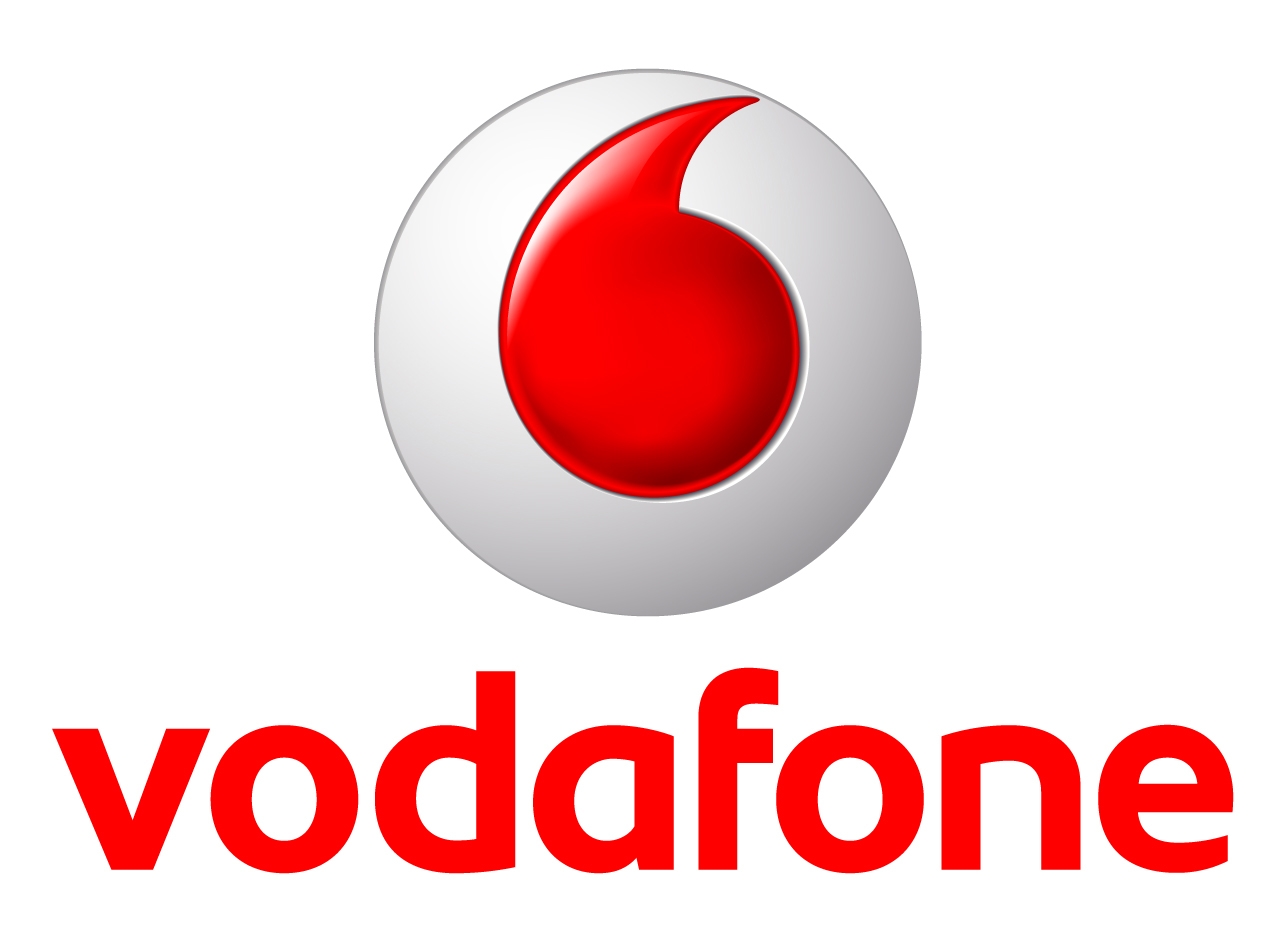 It’s been looming and was long expected but today Vodafone
It’s been looming and was long expected but today Vodafone 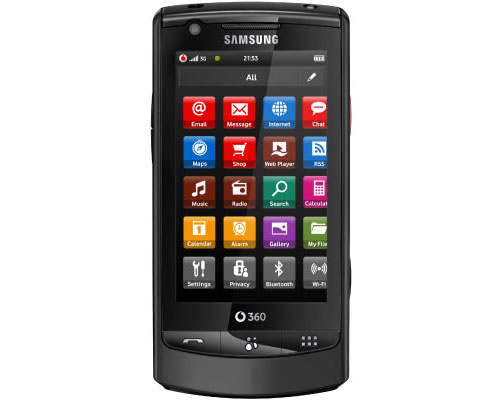 Anyway, back to Vodafone. They have realised (and, credit to them, admit it!) that a vertical implementation where you only get the full scope of 360 services if you have one of two phones doesn’t work. And, well, that’s somewhat obvious, isn’t it? Or is it a reasonable assumption that all my friends will all of a sudden (and at the same time) exchange their various handsets for a Samsung M1? No, I thought not either.
Anyway, back to Vodafone. They have realised (and, credit to them, admit it!) that a vertical implementation where you only get the full scope of 360 services if you have one of two phones doesn’t work. And, well, that’s somewhat obvious, isn’t it? Or is it a reasonable assumption that all my friends will all of a sudden (and at the same time) exchange their various handsets for a Samsung M1? No, I thought not either. On a sideline: I will be moderating a panel on “How to Make Money as a Developer” this week at
On a sideline: I will be moderating a panel on “How to Make Money as a Developer” this week at 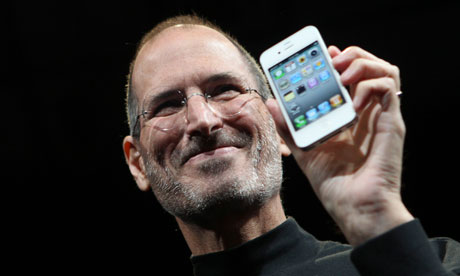 Apple’s iPhone is only a marketing fad for vain urbanites. True purists go for Android. Those who see the light in volume go for Nokia or Samsung.
Apple’s iPhone is only a marketing fad for vain urbanites. True purists go for Android. Those who see the light in volume go for Nokia or Samsung.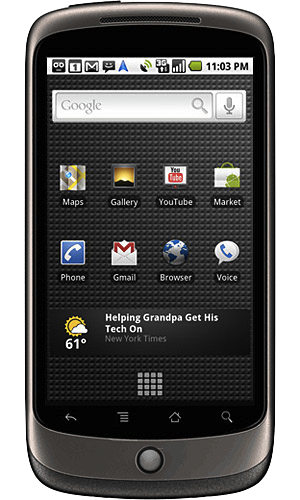 On the Nexus, you’re OK (-ish) if your life evolves around Google. With a Gmail account and associated contacts (and/or calendars), you’re sort of OK. It does all that. Now – shock, horror – I do not actually send all my mail from Gmail and my contacts are mainly dealt with in my address book (take Outlook or whatever you want if you’re a Windows user). And I use iCal and not Google Calendar. And so it starts: there is no desktop application that would help me do this. On a Mac, the phone is not even recognised when you plug it in (and that is a rare thing on a Mac; is this another piece of Apple vs. Google? I don’t know but I doubt it). So you are finding yourself setting everything up by hand! Entering the POP3 and SMTP (or IMAP) server addresses, user names, passwords, etc, etc for seven e-mail accounts is no fun. And (remember I am not a techie) invariably leads to some box checked wrongly here or a typo in a password there and, kawoom, nothing works. I can set up a Google Calendar/iCal sync BUT that will only sync the specific Google Calendar bit between the two, and not any of my other (work, home) calendars. I can sync my address book with Google, so that works. The whole procedure took me the better part of 45 minutes, including lots of corrections and swearing and led to me abandoning a half-configured beauty of an Android phone. Great result.
On the Nexus, you’re OK (-ish) if your life evolves around Google. With a Gmail account and associated contacts (and/or calendars), you’re sort of OK. It does all that. Now – shock, horror – I do not actually send all my mail from Gmail and my contacts are mainly dealt with in my address book (take Outlook or whatever you want if you’re a Windows user). And I use iCal and not Google Calendar. And so it starts: there is no desktop application that would help me do this. On a Mac, the phone is not even recognised when you plug it in (and that is a rare thing on a Mac; is this another piece of Apple vs. Google? I don’t know but I doubt it). So you are finding yourself setting everything up by hand! Entering the POP3 and SMTP (or IMAP) server addresses, user names, passwords, etc, etc for seven e-mail accounts is no fun. And (remember I am not a techie) invariably leads to some box checked wrongly here or a typo in a password there and, kawoom, nothing works. I can set up a Google Calendar/iCal sync BUT that will only sync the specific Google Calendar bit between the two, and not any of my other (work, home) calendars. I can sync my address book with Google, so that works. The whole procedure took me the better part of 45 minutes, including lots of corrections and swearing and led to me abandoning a half-configured beauty of an Android phone. Great result.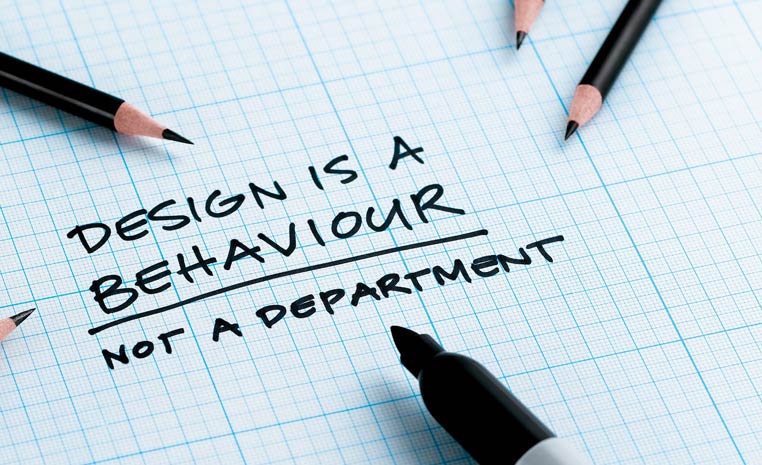 My answer is: because they design it with engineer-centric design. And that is wrong! Why? Well, because most people are not engineers! An engineer thinks something along the following: I am Google and we love the cloud. Therefore, I will design everything so that it will adhere to that principle and will – in a purist kind of way – design everything in a way that you can beautifully and seamlessly set everything up – if and as long as you use all the wonderful Google services we have. And if you don’t get that, you’re not worthy.
My answer is: because they design it with engineer-centric design. And that is wrong! Why? Well, because most people are not engineers! An engineer thinks something along the following: I am Google and we love the cloud. Therefore, I will design everything so that it will adhere to that principle and will – in a purist kind of way – design everything in a way that you can beautifully and seamlessly set everything up – if and as long as you use all the wonderful Google services we have. And if you don’t get that, you’re not worthy.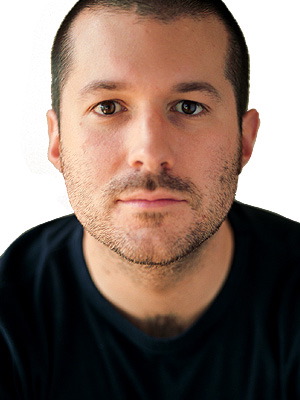 Apple looks at things a little differently (and it is not only for the better although, for most people, it is): they provide a tool that brings everything I need over to my phone just like that. Job done. Easy! They will look at whatever tools they need for this. And if it means extending iTunes (which, yes, I know, they had already) to accommodate syncing data other than music and video to something other than a computer, than so be it. In that, they follow their own philosophy as slavishly as the other guys do but they do design it from a people-centric rather than an engineer-centric point of view. And that is why it works so well for people that are not (also) engineers.
Apple looks at things a little differently (and it is not only for the better although, for most people, it is): they provide a tool that brings everything I need over to my phone just like that. Job done. Easy! They will look at whatever tools they need for this. And if it means extending iTunes (which, yes, I know, they had already) to accommodate syncing data other than music and video to something other than a computer, than so be it. In that, they follow their own philosophy as slavishly as the other guys do but they do design it from a people-centric rather than an engineer-centric point of view. And that is why it works so well for people that are not (also) engineers.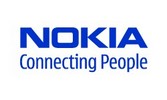
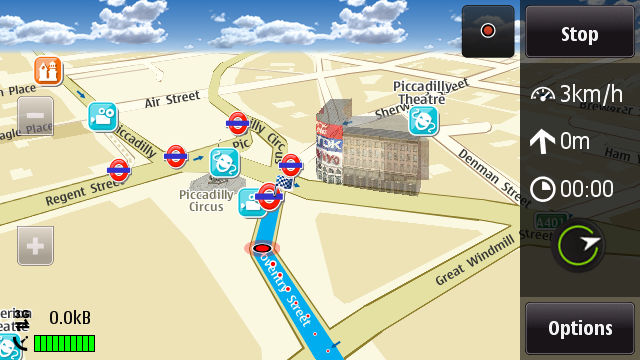 Also: Ovi Maps looks like a VERY good a
Also: Ovi Maps looks like a VERY good a Today seems to be the day of “the others”, huh? 😉 First Android, now Symbian. But the news are too significant to ignore:
Today seems to be the day of “the others”, huh? 😉 First Android, now Symbian. But the news are too significant to ignore: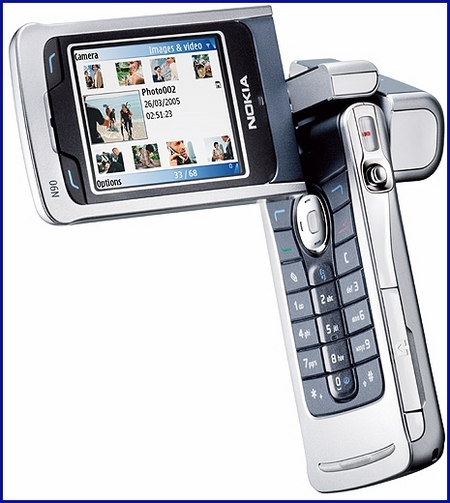 Nokia has made a lot of mistakes recently, with its stores, and others: to come out with something that was thought to be “good enough” is bad: strive to be the best at least, will you? Incidentally, it might have avoided the scrambling it finds itself in since the Apple app store launched. Hah, who would have thought? But let’s be fair: Nokia went about its business better in the past, it has unprecedented scale. Examples? What is the best-selling consumer electronics device of all time? The Nokia 1100 with more than 200m sold devices). Does anyone remember sub-10 Megapixel digital cameras? Well, there are few left, you see. Nokia killed that market by putting out camera phones with Carl Zeiss lenses: good, good stuff. I was in the room of the hotel in Zell am See when they laid the growth curve of camera phones over the shrinking sales curve of digital cameras. Impressive! Stand-alone PDAs? Gone. GPS devices? Hardly existing outside phones anymore (even Tom Tom satnav devices are offered with
Nokia has made a lot of mistakes recently, with its stores, and others: to come out with something that was thought to be “good enough” is bad: strive to be the best at least, will you? Incidentally, it might have avoided the scrambling it finds itself in since the Apple app store launched. Hah, who would have thought? But let’s be fair: Nokia went about its business better in the past, it has unprecedented scale. Examples? What is the best-selling consumer electronics device of all time? The Nokia 1100 with more than 200m sold devices). Does anyone remember sub-10 Megapixel digital cameras? Well, there are few left, you see. Nokia killed that market by putting out camera phones with Carl Zeiss lenses: good, good stuff. I was in the room of the hotel in Zell am See when they laid the growth curve of camera phones over the shrinking sales curve of digital cameras. Impressive! Stand-alone PDAs? Gone. GPS devices? Hardly existing outside phones anymore (even Tom Tom satnav devices are offered with